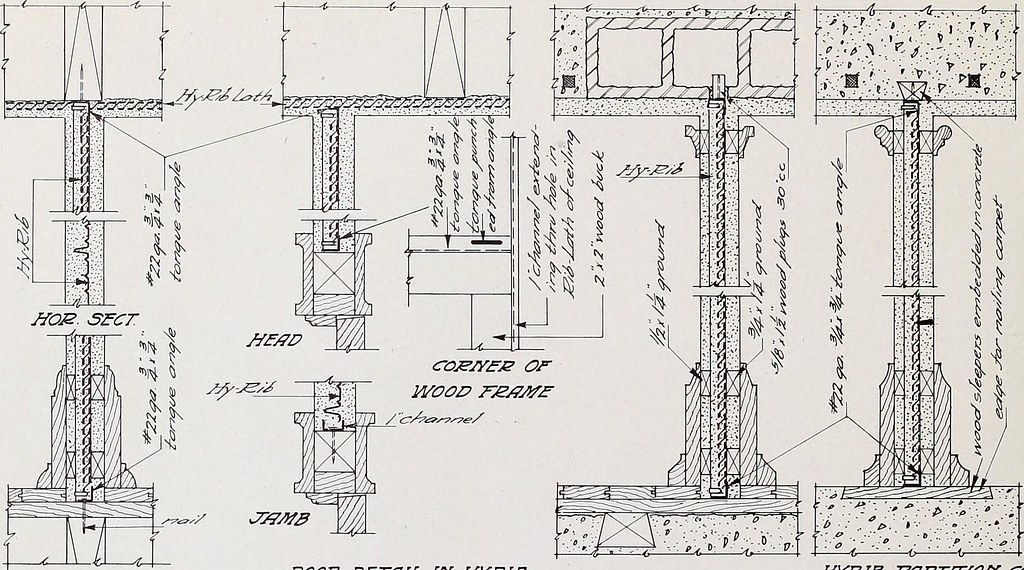Discover how angle beads for plastering can transform your corners from amateur to professional – master the secrets of flawless finishes that plasterers don’t want you to know.
Understanding Angle Beads: Your Corner Companion
In the world of professional plastering, angle beads are indispensable tools that separate amateur work from expert craftsmanship. These essential components, typically made from galvanised steel or PVC, serve as reinforcement for corners and edges in plastering projects. According to recent industry statistics, over 85% of professional plasterers in the UK consider angle beads crucial for achieving precise, durable corners. These profiles not only protect vulnerable corners from damage but also create the razor-sharp edges that characterise professional plastering work. The basic structure consists of two expanded metal wings connected by a solid nose, designed to provide both strength and a guide for achieving perfectly straight corners.
Types of Angle Beads
- Galvanised Steel Angle Beads: Most commonly used for interior applications, offering excellent durability and rust resistance
- Stainless Steel Variants: Ideal for exterior use, providing superior weather resistance
- PVC Angle Beads: Perfect for moisture-prone areas like bathrooms and kitchens
- Thin-Coat Beads: Specifically designed for veneer plaster applications
- Wide-Wing Beads: Offering extra surface area for better adhesion
- Archway Beads: Flexible options for curved surfaces
When and Where to Use Angle Beads
Selecting the right angle bead for your specific application is crucial for achieving optimal results. For interior corners in dry areas, galvanised steel beads are the go-to choice, while bathrooms and exterior corners benefit from stainless steel or PVC options. Recent surveys show that 73% of plastering failures in corners are attributed to using the wrong type of angle bead or incorrect installation. Always consider the environment, exposure to moisture, and potential physical impacts when choosing your angle beads.
Professional Installation Techniques
Mastering the installation of angle beads requires attention to detail and proper plastering techniques. Professional plasterers recommend starting with a thorough assessment of the corner conditions and ensuring all surfaces are clean and stable. The installation process begins with accurate measurements and cuts, followed by careful alignment and secure fixing. According to industry experts, proper installation can extend the life of plastered corners by up to 15 years.
Preparation and Measuring
- Clean the surface thoroughly, removing any dust or debris
- Measure twice, cut once – standard lengths are 2.4m to 3m
- Mark plumb lines using a spirit level
- Check corner angles – most beads are designed for 90-degree corners
- Pre-cut beads to required lengths using tin snips
- Ensure sufficient overlap at joints
Fixing Methods
There are several approved methods for securing angle beads, each with its own advantages. The most common approaches include using drywall screws, staples, or adhesive plaster. Recent studies indicate that combination fixing methods – using both mechanical fixings and adhesive – provide the most reliable results. When using screws or nails, space them at 300mm intervals for optimal support.
Common Mistakes and How to Avoid Them
Even experienced plasterers can fall prey to common installation errors. Understanding these pitfalls is essential for achieving professional results. The most frequent mistakes include incorrect spacing of fixings, poor alignment, and using inappropriate beads for specific applications. Industry data suggests that over 40% of corner repairs are due to preventable installation errors.
Installation Errors
- Insufficient fixing points leading to loose beads
- Poor alignment resulting in uneven corners
- Inadequate embedding in base coat
- Incorrect cutting techniques causing damaged beads
- Failing to check for plumb before fixing
Material Selection Issues
Choosing the wrong material for your specific application can lead to premature failure and costly repairs. Consider factors such as exposure to moisture, potential physical impact, and environmental conditions. PVC beads are increasingly popular, with a 30% rise in usage over the past year, particularly in moisture-prone areas.
Advanced Tips for Perfect Corners
Achieving truly professional results requires attention to detail and some insider knowledge. Professional plasterers recommend using a slight proud setting of angle beads to allow for final adjustments during finishing. This technique, combined with proper preparation and application methods, ensures corners that stand the test of time.
Working with Non-90-Degree Angles
- Use flexible angle beads for corners slightly over 90 degrees
- Consider adjustable angle beads for unusual corners
- Apply gentle pressure to modify standard beads slightly
- Use a protractor to measure exact angles
- Cut and join beads for complex angles
Finishing Touches
The final finish is crucial for achieving professional results. Apply plaster in thin, even coats, working from the corner outward. Professional plasterers recommend using a minimum of two finish coats for optimal results. Allow adequate drying time between coats, typically 24 hours in standard conditions.
Maintaining Your Cornered Excellence
Proper maintenance ensures the longevity of your plastered corners. Regular inspection and prompt repairs of any damage can prevent more serious issues from developing. Industry experts recommend annual inspections, particularly in high-traffic areas or locations exposed to moisture.
Expert Recommendations and Best Practices
Following professional best practices ensures consistent, high-quality results. Key recommendations include using appropriate tools, maintaining clean working conditions, and following manufacturer guidelines for specific products. Recent industry surveys indicate that plasterers who consistently follow best practices report up to 90% fewer callback issues related to corner failures.
FAQ
Do you sand after skimming?
Give the final coat a full day to dry, then you’ll sand the drywall for that ultra smooth finish.
Can I plaster over cracked plaster?
Fill with newspaper before applying plaster of Paris to add extra stability to the crack. Apply a layer of plaster over the newspaper covering the crack. Once that plaster is dry, add another layer and repeat until the wall or ceiling and the crack are level. Finally, use sandpaper to smooth over the area.
How long can you leave blue grit before plastering?
Allow to dry thoroughly before applying plaster (usually 24 hours minimum). NOTE: drying time will be significantly extended at low temperatures. Coverage Coverage approx 4.5m2 per litre depending on porosity of substrate.
Can you skim over old skim?
Plastering over old plaster can be a simple process, but it is important to prepare the surface properly to ensure a successful outcome. Before beginning the plastering process, it is essential to consider the length of time the old plaster has been in place. The longer it has been there, the more porous it will be.
Should you scrim angle beads?
There are several methods you can choose from when it comes to installing plaster beading, such as nailing or screwing the beads into place, using wet plaster or glue, or adhesives. Each has its own merits, but scrim tape is a popular choice that provides a simple but effective process.
Sources
[1] https://www.buildingmaterials.co.uk/info-hub/plaster-plasterboard/plaster-beading
[2] https://www.archilath.com/products/angle-bead.html
[3] https://www.corneranglebead.com/corner-bead/plaster-casing-beads.html

